Review & Guide of Cinematic Music
In the realm of music, few genres possess the ability to transport listeners to vivid landscapes and evoke powerful emotions quite like cinematic music. With its sweeping orchestral arrangements, epic melodies, and evocative soundscapes, cinematic music has the unique ability to tell stories, set moods, and capture the imagination.
In this review and guide, we embark on a journey through the mesmerizing realm of cinematic music, exploring its origins, characteristics, and the various ways in which it can be accessed and appreciated.
Part1: What is Cinematic Music?
Cinematic music, also known as film music or soundtrack music, is a genre of music composed specifically to accompany visual media such as films, television shows, video games, and advertisements. It serves to enhance the emotional impact of scenes, establish mood and atmosphere, and convey narrative elements through sound.
The history of cinematic music dates back to the early days of silent films in the late 19th and early 20th centuries. Initially, live musicians would perform alongside screenings to provide a musical accompaniment, often improvising music to match the action on screen. As technology advanced, the introduction of synchronized sound in films paved the way for the development of composed scores specifically tailored to enhance visual storytelling.
One of the earliest pioneers of cinematic music was Max Steiner, who is credited with composing the first fully synchronized film score for "King Kong" in 1933. Throughout the 20th century, composers like Bernard Herrmann, Ennio Morricone, John Williams, and Hans Zimmer made significant contributions to the genre, shaping the sound of cinematic music with their innovative compositions and iconic themes.
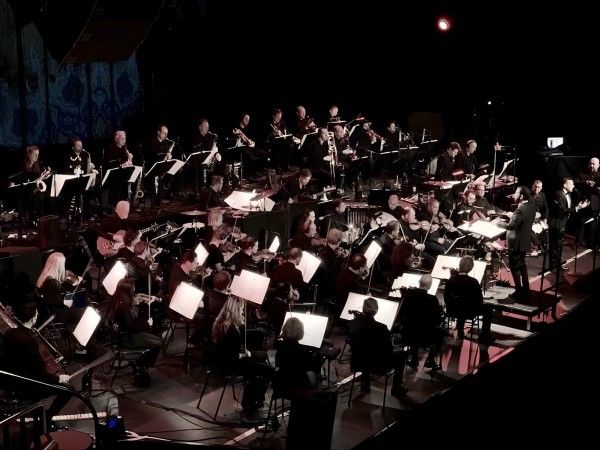
Part 2: Main Characteristics of Cinematic Music
- 1.Emotional Depth
- 2.Narrative Support
- 3.Orchestral Arrangements
- 4.Dynamic Range
Cinematic music is characterized by its ability to evoke a wide range of emotions, from joy and excitement to sadness and fear. Composers use various musical techniques such as melody, harmony, and orchestration to convey the emotional nuances of a scene.
One of the primary functions of cinematic music is to support and enhance the narrative elements of visual media. It can help establish the setting, develop characters, and highlight key plot points, providing a rich and immersive experience for the audience.
Cinematic music often features lush orchestral arrangements, with a wide variety of instruments including strings, brass, woodwinds, and percussion. These orchestral textures contribute to the grandeur and epic scale often associated with film scores.
Cinematic music is known for its use of dynamic range, with moments of quiet intimacy contrasted by soaring crescendos and dramatic climaxes. This dynamic contrast adds tension, drama, and excitement to film scenes, heightening the emotional impact for viewers.
Part 3: How to Get Royalty-Free Cinematic Music
In today's digital age, finding high-quality, royalty-free cinematic music has become essential for content creators, filmmakers, and multimedia producers. Introducing HitPaw AI Music Generator, an innovative solution that simplifies the process of obtaining original cinematic music without worrying about copyright issues.
HitPaw AI Music Generator is a cutting-edge tool designed to provide users with access to a vast library of royalty-free cinematic music. Whether you're working on a film project, creating promotional videos, or developing multimedia presentations, HitPaw AI Music Generator offers a convenient and cost-effective solution for enhancing your content with captivating soundtracks.
Pros
- 1.Extensive Library:HitPaw AI Music Generator offers a diverse range of cinematic music tracks, spanning various genres, moods, and instrumentation, ensuring users have plenty of options to choose from for their projects.
- 2.High-Quality Results:The AI-powered technology behind HitPaw ensures that each generated track meets high standards of quality, with realistic instrumentation, dynamic arrangements, and immersive soundscapes.
- 3.Royalty-Free Licensing:With HitPaw AI Music Generator, users can access royalty-free music without worrying about copyright issues or licensing fees. This allows for greater flexibility and peace of mind when using music in commercial or creative projects.
- 4.Customization Options:Users have the flexibility to customize their cinematic music tracks by adjusting parameters such as tempo, key, mood, and instrumentation, allowing for a personalized touch to suit the specific needs of their projects.
Cons
- 1.Limited Creative Control:While customizable, the automated nature of AI-generated music may restrict users' ability to finely tailor compositions to their exact specifications.
- 2.Learning Curve:Despite its user-friendly interface, newcomers may encounter a learning curve when familiarizing themselves with HitPaw AI Music Generator's features and functionalities.
Steps on How to Generate Cinematic Music Genre
Here are the steps to generate cinematic music using HitPaw AI Music Generator:
Step 1:Access HitPaw AI Music Generator
Open the HitPaw AI Music Generator tool on your computer or mobile device.Step 2:Choose Cinematic Music Genre
Within the software interface, navigate to the options or settings to specify the musical genre. Select "Cinematic" or "Film Score" from the available genres.
Step 3:Customize Settings (Optional)
Adjust parameters such as tempo, key, mood, and instrumentation to tailor the generated cinematic music to your preferences. You may also have the option to specify additional characteristics such as epic, suspenseful, or uplifting.Step 4:Generate Music
Once you've selected the cinematic music genre and customized the settings, initiate the music generation process by clicking on the appropriate button (e.g., "Generate" or "Create"). Allow the HitPaw AI Music Generator to work its magic and generate your unique cinematic music composition.
Watch the following video to learn more details:
Bonus Tip: Some Classic Cinematic Music on YouTube
Here are some classic cinematic music tracks on YouTube:
- 1. "The Lord of the Rings Symphony" by Howard Shore
- 2."Schindler's List Theme" by John Williams
- 3. "Jurassic Park Theme" by John Williams
- 4. "The Godfather Theme" by Nino Rota
- 5. "Star Wars Main Theme" by John Williams
This symphonic suite composed by Howard Shore features themes from the iconic "Lord of the Rings" film trilogy. With its sweeping melodies and epic orchestrations, it captures the grandeur and adventure of Middle-earth.
Composed by legendary composer John Williams, this hauntingly beautiful theme from the film "Schindler's List" is renowned for its emotional depth and poignant melodies. It evokes the tragedy and resilience of Holocaust survivors.
Another masterpiece by John Williams, the "Jurassic Park" theme is instantly recognizable with its majestic orchestral arrangements and soaring melodies. It captures the awe and wonder of encountering dinosaurs in a prehistoric world.
Nino Rota's iconic theme from "The Godfather" is synonymous with cinematic excellence. Its haunting melody and evocative instrumentation evoke the atmosphere of organized crime and family loyalty depicted in the film.
No list of classic cinematic music would be complete without mentioning the "Star Wars" main theme by John Williams. This epic fanfare is instantly recognizable and has become an integral part of popular culture, symbolizing the timeless struggle between good and evil in a galaxy far, far away.
FAQs of Cinematic Music
Q1. How do you make a song more cinematic?
A1. To make a song more cinematic, composers often use orchestral instruments such as strings, brass, and percussion to create lush arrangements and evoke a sense of grandeur and emotion.
Q2. Is cinematic music a genre?
A2. While cinematic music is often referred to as a genre due to its distinct characteristics and purpose, it is more accurately described as a style or category of music composed for visual media such as films, television shows, and video games.
Q3. When did cinematic music start?
A3. The origins of cinematic music can be traced back to the early days of silent films in the late 19th and early 20th centuries. Initially, live musicians would perform alongside screenings to provide a musical accompaniment, often improvising music to match the action on screen.
Final Word
Cinematic music stands as a powerful and integral component of visual storytelling, enriching the viewer's experience with its emotive melodies and evocative arrangements. From the early days of silent films to the present day, cinematic music has evolved to become a diverse and influential art form, shaping the narrative and atmosphere of countless films, television shows, and video games.
For aspiring filmmakers, content creators, and multimedia producers seeking to enhance their projects with captivating cinematic music, HitPaw Music Generator emerges as a valuable tool. With its user-friendly interface, a vast library of royalty-free tracks, and customizable options, HitPaw empowers users to create original soundtracks that elevate their storytelling to new heights.






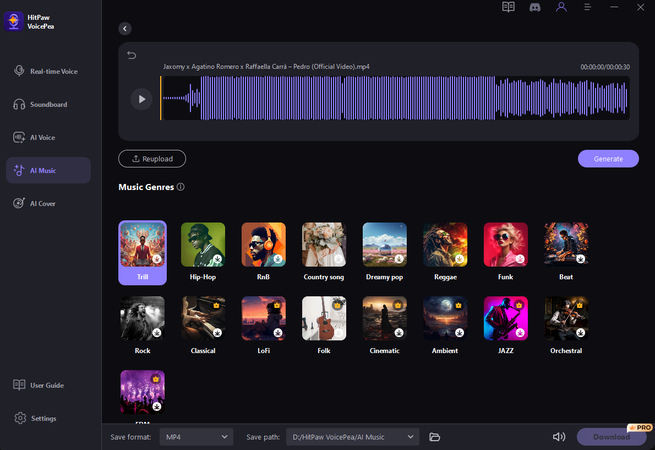
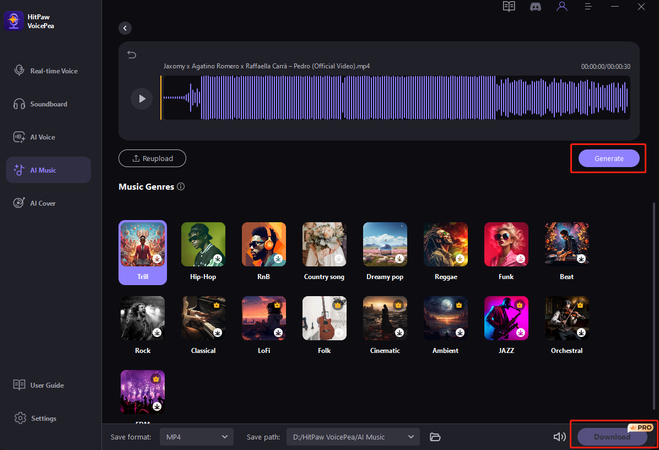
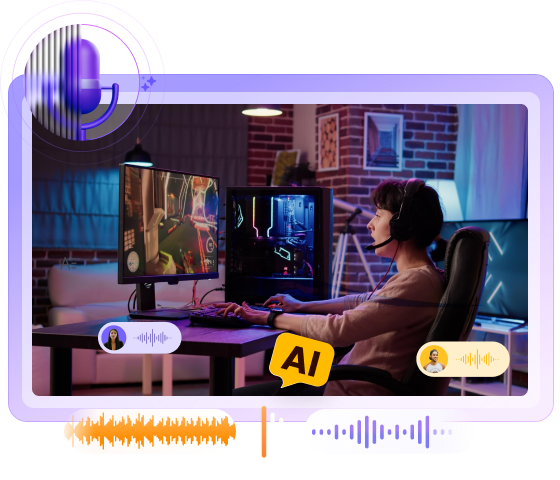
 HitPaw Edimakor
HitPaw Edimakor HitPaw VikPea (Video Enhancer)
HitPaw VikPea (Video Enhancer)

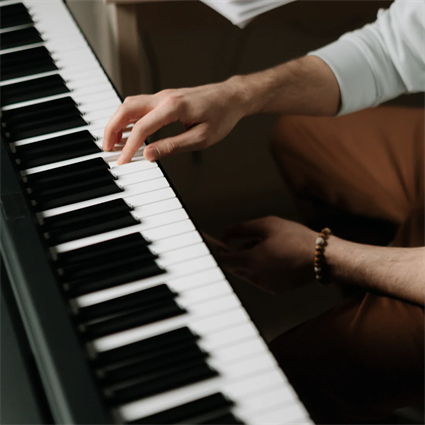

Share this article:
Select the product rating:
Daniel Walker
Editor-in-Chief
My passion lies in bridging the gap between cutting-edge technology and everyday creativity. With years of hands-on experience, I create content that not only informs but inspires our audience to embrace digital tools confidently.
View all ArticlesLeave a Comment
Create your review for HitPaw articles